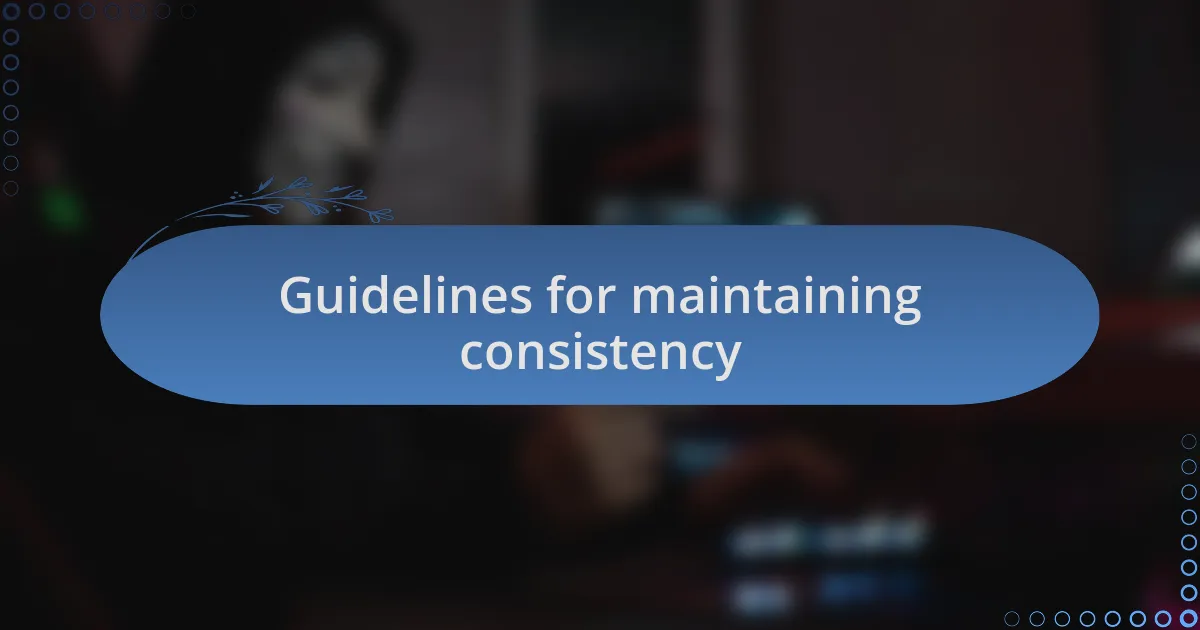Key takeaways:
- A design system enhances project efficiency and user experience by providing reusable components and guidelines for consistency.
- Documentation of design elements, such as typography and color palettes, is crucial for maintaining visual harmony across projects.
- Regular audits and team discussions about the design system foster collaboration and alignment, leading to higher quality outcomes.
- Involving the entire team in refining the design system strengthens both the product and the team’s connection to the design process.

Understanding design systems
When I first stumbled upon the concept of design systems, it felt like discovering a hidden roadmap that could elevate my web projects. A design system is essentially a collection of reusable components and guidelines that ensure consistency across digital products. This structured approach not only makes my workflow more efficient but also helps create a cohesive user experience that resonates with visitors.
I remember implementing a design system for a recent project, and the transformation was striking. Suddenly, I could see the interconnectedness of elements, from typography to colors, all speaking the same visual language. Have you ever noticed how some websites just feel right? That’s the magic of a design system at work, crafting a seamless journey for users.
Using a design system also fosters collaboration among team members. I’ve seen how it bridges gaps between designers and developers, making communication smoother and keeping everyone aligned. When everyone is on the same page, projects not only progress faster but also often result in higher-quality outcomes. Isn’t that a win-win?

Guidelines for maintaining consistency
To maintain consistency within a design system, I prioritize creating and adhering to a set of clear guidelines. For instance, when I designed a button component, I outlined its sizes, colors, and hover states in detail. This meant that no matter who on the team was adding new features, they’d follow the same specifications, ensuring a uniform look and feel throughout.
I once faced a challenge when different team members were using varying font sizes for headings, which disrupted the visual harmony of the site. It was a pivotal moment when I realized that documenting our typography scale was essential. By providing this resource, I helped the team understand not just the “what” but the “why,” reinforcing our collective commitment to a consistent user experience.
Regular audits of the design system are another crucial aspect I’ve discovered. After a few months of using the system on a project, I take a step back to evaluate how well the guidelines are being followed. This reflection not only catches inconsistencies early on, but it often leads to insightful discussions within the team, as we identify areas for improvement and adaptation. Don’t you think that constant reassessment is key to evolving alongside design trends?

Personal experiences with design systems
When I first started implementing design systems, I was amazed at how much clarity they brought to my workflow. In one project, we adopted a color palette but didn’t define specific shades for different components. As a result, my team ended up using different variations, which led to a chaotic visual experience. This taught me the importance of clearly defining a palette to ensure that every element felt cohesive and intentional.
I still remember the team meeting when we introduced a new card layout. Each designer had a different interpretation of how it should look and function, which caused frustration. It was then I realized that sharing a comprehensive component library was vital. I started to encourage discussions around our design choices, making it easier to understand each other’s perspectives and reinforcing the need for a unified approach. How often have you witnessed a project derailed by a lack of shared vision?
On a recent project, I facilitated a workshop where we collectively revisited our design system. Seeing my colleagues collaborate to refine our components was inspiring. It highlighted the emotional connection we all have to the design process. By involving everyone, we not only improved our system but also deepened our team’s bond. Isn’t it fascinating how a simple design system can transform not just a product, but also the people behind it?